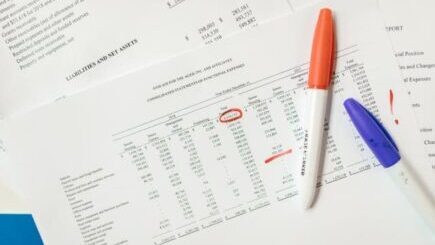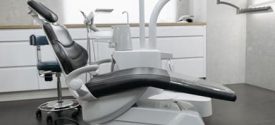Fixed Assets: Maximize Your Business Value & Future Growth
Fixed assets aren’t just line items on balance sheets, they’re the unshakeable foundation of your business. Think about that Hollywood bakery with its custom oven: without it, those artisanal sourdough loaves vanish. Yet too many owners treat assets like static props, not growth engines. What separates thriving shops from struggling ones? Mastery over these tangible tools.
Forget vague theories. We’ll decode how tracking, depreciation, and smart maintenance turn machinery into profit multipliers. Ever seen a food truck double revenue by optimizing grill rotations? That’s fixed assets in action. Ready to transform your equipment from cost centers into value rockets? Let’s begin.
What are fixed assets?
Fixed assets are tangible, long-term power players, physical assets your business owns and uses for operations, not quick resale. Think that stainless-steel espresso machine at your Miami Beach café steaming lattes daily, or the delivery van navigating I-95 traffic to haul supplies. These workhorses must last over a year, like your Fort Lauderdale warehouse shelving or those ovens baking sourdough in that Hollywood storefront.
But here’s the kicker: that $2,500 MacBook? If your Wynwood design studio uses it for client projects, it’s a fixed asset. If you’ll flip it next quarter? Just inventory. Gotcha.
| Fixed assets | Current assets |
|---|---|
| Tangible (physical items) | Intangible/liquid (cash, patents) |
| Used for operations (>1 year) | Converted quickly (<1 year) |
| Value drains via depreciation | Value stable (or market-driven) |
Misclassify them, and you’re inviting compliance nightmares or loan rejections. Precision here isn’t paperwork—it’s profit protection.
Why fixed assets drive small business growth
Fixed assets aren’t idle investments, they’re silent growth partners. Picture that Coral Gables boutique: its custom fitting rooms transform hesitant browsers into loyal buyers. That’s operational leverage in action. But the magic multiplies offstage.
First, collateral. Banks drool over machinery or property when approving loans, just ask that Miami Shores brewery that leveraged its fermenters for expansion capital via SBA loans. Tried securing funds with just receivables? Good luck. Second, tax advantages. That Little Havana bakery’s oven? Its depreciation shaves $1,200 annually off taxable income using IRS-sanctioned tactics, while baking revenue. Third, resale value. Upgrade equipment, and your old CNC router funds the new one.
But here’s the kicker most bean counters miss: poorly managed assets bleed cash. Ever seen a Sunrise landscaping biz pay taxes on sold mowers? Ouch.
The triple win:
- Operational grit: Keep production humming
- Financial muscle: Unlock loans & tax breaks
- Exit flexibility: Boost business valuation
Let’s get real: ignoring fixed assets is like burying gold in your backyard. Except here, the map’s public, if you know where to look.

The small business fixed assets roadmap
Think managing fixed assets is complex? That Miami Gardens food truck owner did too, until she cracked this 3-phase system. Follow these steps religiously:
Phase 1: Acquisition
- Never pay retail: Replicate that Davie auto shop’s win, score wholesale equipment deals through NAEDA by buying three lifts together.
- Bewere financing traps: Low-interest loans beat leases for long-term assets (that Hollywood bakery’s oven loan saved $9k vs. leasing).
Phase 2: Tracking
- Start simple: Free tools like Wave’s asset tracker work for sub-50 item inventories.
- Scale smart: When Pompano marinas tag engines with Zebra’s RFID scanners, ghost assets vanish.
- Audit quarterly: Spot discrepancies faster than a South Beach bartender spots fake IDs.
Phase 3: Depreciation
- Speed vs. stability:
- Section 179: Immediate write-offs for <$1M equipment (ideal for tech upgrades)
- Straight-line: Steady annual deductions for warehouses/land (like that Doral expansion)
- Hybrid hack: Combine both, write off 60% upfront via Section 179, depreciate the rest. Genius.
One last thing: Heard about the Broward café depreciating espresso machines over 15 years? Don’t be that guy. The IRS useful life tables say 5 years max.
Critical mistakes to avoid
Fixed assets seem straightforward, until they explode your finances. Take that Boca Raton deli: wrote off a stolen slicer as a ghost asset, then paid taxes on thin air for years. Oof. Dodge these three silent killers:
- Ghost assets & record gaps
That slicer fiasco? Far too common. If you’ve sold, scrapped, or lost equipment without updating logs, you’re overpaying taxes. Worse: lenders spot sloppy PP&E records and bolt. - DIY depreciation disasters
Using straight-line for tech gear? Big mistake. Laptops depreciate fastest upfront, miss IRS MACRS tables and you’ll bleed cash. That Coral Springs gym saved $8k switching to accelerated depreciation. - Maintenance neglect
Skipping oil changes on your Key West tour van? Repairs/upgrades aren’t optional, they’re value preservation. Track them religiously or kiss resale profits goodbye.
But here’s the real tragedy: 64% of small biz audits flag these errors. Don’t become a cautionary tale.
Future-proofing your assets
Fixed assets are getting smarter, ignore this, and you’re polishing a flip phone. AI isn’t sci-fi; it’s practical armor. That Fort Myers packaging plant? Its sensors now predict hydraulic press failures weeks early using IBM’s Maximo AI. Downtime plunged 40%.
Blockchain’s not just crypto. Imagine logging every Miami high-rise elevator upgrade on an unhackable ledger, transparent maintenance trails that boost valuations. Skeptical? That Tampa shipyard’s already testing SAP’s blockchain trackers.
Then there’s the green wave. Florida’s new sustainability tax credits slash 15% off solar-paneled warehouses. But here’s the rub: eco-upgrades demand meticulous depreciation splits. Messy? Maybe. Lucrative? Absolutely.
One question lingers: Will you retrofit or rust?
FAQ: Fixed assets unpacked
Q: Is my designer’s MacBook a fixed asset?
A: Only if it’s used daily for operations, like that Wynwood graphic studio running Adobe suites. Flip it within a year? Then it’s inventory. The IRS draws this line at 1 year+ usefulness.
Q: Can I write off my new Coral Gables bakery oven immediately?
A: Often, yes! Section 179 deductions let small biz owners deduct <$1.16M in equipment yearly. But big-ticket items? Might need multi-year depreciation. Pro tip: mix both tactics.
Q: How often should I track assets?
A: Bi-annually minimum. That Pompano boatyard found ghost mowers vanished with RFID scans every quarter. Neglect this, and you’re basically burning tax cash.
Q: Do eco-upgrades like solar panels complicate depreciation?
A: Slightly. Florida’s sustainability credits save 15% upfront, but you’ll split deductions between the panels and roof. Worth it? Ask that Tampa warehouse saving $12k/year.
Conclusion: Transform fixed assets into growth engines
Fixed assets aren’t backstage scenery, they’re lead actors in your business drama. That Hollywood bakery’s oven? It’s not just baking bread; it’s fueling tax savings and collateral for expansion. Still treating yours like museum pieces? Frankly criminal.
We’ve sliced through the noise:
- Value maximization (hello, hybrid depreciation)
- Risk slashing (ghost asset exorcisms)
- Future-proofing (AI, blockchain, green credits)
But manuals won’t save you. Ask that Wynwood design studio, they learned the hard way when unlogged Wacom tablets triggered $14k in phantom taxes after an IRS audit.
Unlock hidden capital trapped in your equipment. Start with a fixed asset review from H&S Accounting & Tax Services before the taxman knocks.







